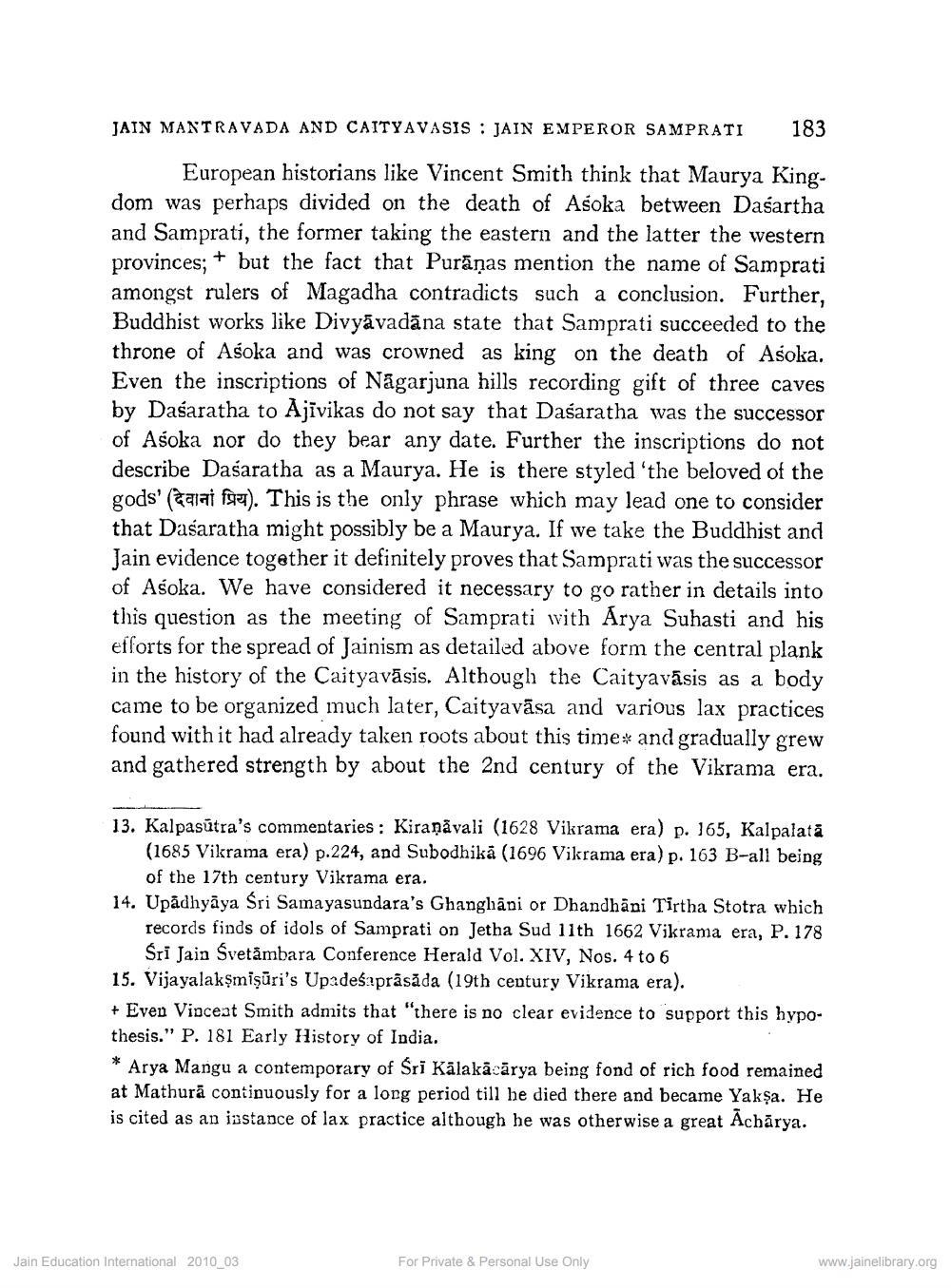________________
JAIN MANTRAVADA AND CAITYAVASIS JAIN EMPEROR SAMPRATI
183
European historians like Vincent Smith think that Maurya Kingdom was perhaps divided on the death of Asoka between Dasartha and Samprati, the former taking the eastern and the latter the western provinces; but the fact that Purāņas mention the name of Samprati amongst rulers of Magadha contradicts such a conclusion. Further, Buddhist works like Divyavadana state that Samprati succeeded to the throne of Asoka and was crowned as king on the death of Asoka. Even the inscriptions of Nagarjuna hills recording gift of three caves by Dasaratha to Ajivikas do not say that Dasaratha was the successor of Asoka nor do they bear any date. Further the inscriptions do not describe Dasaratha as a Maurya. He is there styled 'the beloved of the gods' (alfa). This is the only phrase which may lead one to consider that Dasaratha might possibly be a Maurya. If we take the Buddhist and Jain evidence together it definitely proves that Samprati was the successor of Asoka. We have considered it necessary to go rather in details into this question as the meeting of Samprati with Arya Suhasti and his efforts for the spread of Jainism as detailed above form the central plank in the history of the Caityavasis. Although the Caityavasis as a body came to be organized much later, Caityavāsa and various lax practices found with it had already taken roots about this time and gradually grew and gathered strength by about the 2nd century of the Vikrama era.
13. Kalpasûtra's commentaries: Kiranavali (1628 Vikrama era) p. 165, Kalpalata (1685 Vikrama era) p.224, and Subodhika (1696 Vikrama era) p. 163 B-all being of the 17th century Vikrama era.
14. Upadhyaya Sri Samayasundara's Ghanghäni or Dhandhani Tirtha Stotra which records finds of idols of Samprati on Jetha Sud 11th 1662 Vikrama era, P. 178 Sri Jain Svetämbara Conference Herald Vol. XIV, Nos. 4 to 6
15. Vijayalakşmişuri's Upadesaprasada (19th century Vikrama era).
+ Even Vinceat Smith admits that "there is no clear evidence to support this hypothesis." P. 181 Early History of India.
* Arya Mangu a contemporary of Sri Kalakācārya being fond of rich food remained at Mathura continuously for a long period till he died there and became Yakşa. He is cited as an instance of lax practice although he was otherwise a great Acharya.
Jain Education International 2010_03
For Private & Personal Use Only
www.jainelibrary.org




